Disturbing societal trends raising the risk of a terror attack
ASIO director-general Mike Burgess has done more than raise the level of Australia’s terror threat. He has redefined our security challenge to recognise an increasingly intolerant and divided country.
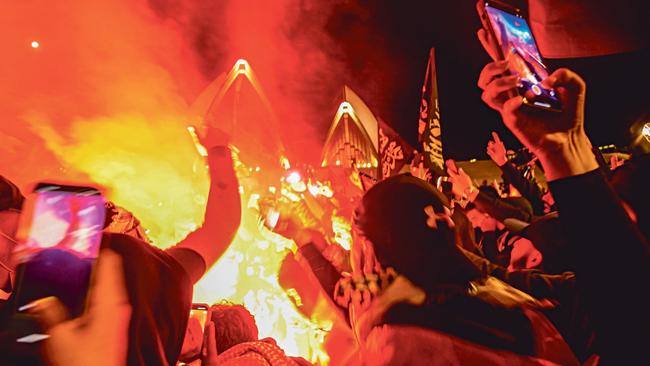
Burgess has been forced to broaden ASIO’s traditional focus to respond to a host of new and disturbing trends that, taken together, have undermined social cohesion and increasingly have normalised violence as a part of protest and public debate.
While some of ASIO’s grim assessment reflects the manifestation in Australia of violent trends in the US and Britain, it also has been influenced heavily by the extraordinary fire and fury ignited at home by the war in Gaza.
Burgess was adamant this week that his decision to raise Australia’s terror threat level from “possible” to “probable” was “not a direct response” to the local fallout from the turmoil in the Middle East. But in the same breath he made a powerful case as to why the heated local response to that conflict is the most “important”, “relevant” and “significant driver” of the country’s “degrading security environment”.
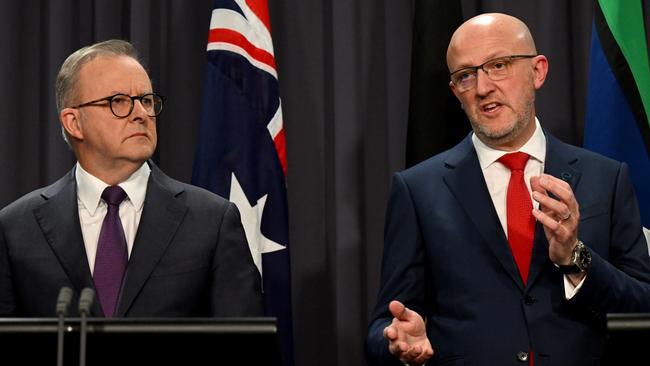
“The conflict has fuelled grievances, promoted protest, exacerbated division, undermined social cohesion and elevated intolerance,” Burgess says.
His comments have led each of the major political parties to point the finger at each other for their part in this outcome.
Anthony Albanese slammed the Greens for fuelling community divisions over Gaza while Peter Dutton said the government should share the blame for failing to tackle anti-Semitism decisively since the Hamas attack on Israel on October 7 last year.
Meanwhile, the Greens, who have refused to strongly condemn Hamas, anti-Semitism or the defacing of MPs’ office by anti-Israel activists, accused the government of politicising the issue, claiming their supporters were only “pushing for peace”.
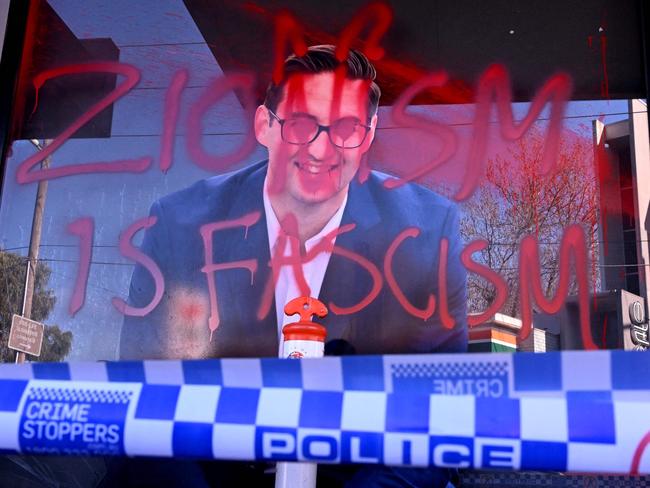
ASIO’s assessment of this new volatile mood is stark, with Burgess declaring “politically motivated violence now joins espionage and foreign interference as our principal security concerns”.
But the critical part of his assessment is that this risk of politically motivated violence is no longer caused by a singular terror driver, such as the rise of Islamic State in 2012.
Instead it is now likely to flow from a range of growing social ills, including a spike in political polarisation and intolerance, violent protests and debate, anti-authoritarian beliefs in part fuelled by excessive Covid lockdowns, conspiracy theories, distrust of institutions and a normalisation of provocative and inflammatory behaviours. What’s more, many are combining these beliefs into what ASIO calls “new hybrid ideologies”, all amplified by the internet and social media, which remains the primary platform for radicalisation. Hard-to-detect lone wolf attacks with a gun or a knife are the likely method of attack, rather than old-style terror cell plots to blow up major landmarks or cause mass casualties.
The relevance of the Gaza conflict to ASIO’s assessment is not that it has created these dangerous trends but, rather, it has helped to fuel them.
The storming of the US Capitol building on January 6, 2021, on the basis of Donald Trump’s “Big Lie” about the 2020 election result was the first major global illustration of the emerging social trends Burgess talks about. These volatile social and political trends have continued to evolve in the US and are reflected in the savage and inflammatory language used by both presidential candidates, Trump and Kamala Harris, on the campaign trail. No one knows precisely why shooter Thomas Crooks chose to try to assassinate Trump last month, but the act was an illustration of the darker, more intolerant times ASIO speaks of.
Meanwhile Britain has been deeply shaken this week by violent anti-immigrant and anti-Muslim riots fuelled by online misinformation and extremist views following a deadly knife attack on children in Southport.
In Australia, ASIO says it has disrupted eight potential terror attacks in the past four months, all involving radicalised youths between the ages of 14 and 21.
This included the stabbing of an Assyrian Orthodox bishop in western Sydney in April by a 16-year-old who was interacting with extremists online. The boy was a part of an online group of fellow extremist youths called Brotherhood, and he used a smiling portrait of Osama bin Laden as his WhatsApp profile picture.

What ASIO fears most is that these dangerous new factors are being turbocharged by the divisions caused in Australia by the conflict in Gaza.
“We’ve been seeing all of the trends that Burgess spoke about in his address for quite some time now, they pre-dated Covid and were certainly accelerated during Covid,” says Lydia Khalil, director of transnational challenges at the Lowy Institute. “The Gaza conflict is similar, it is a contentious societal and political issue contributing to the legitimisation and the normalisation of the use of violence to achieve political ends.”
The Hamas massacre of Israelis on October 7 last year triggered the first ugly manifestation of this in Australia when a flag-burning mob celebrated the Hamas killings and chanted anti-Semitic slogans outside the Sydney Opera House.
Since then there has been a record spike in anti-Semitic attacks across the country, including bashings and verbal abuse of Jews, online harassment, the forced closure of Jewish businesses, the targeting of Jewish performers in the arts and Jewish students on campus during the university encampments.
The pro-Palestinian movement in Australia since October 7 has expressed legitimate concerns about the high civilian death toll during Israel’s war on Hamas in Gaza. But the activist rump of this movement has gone much further than legitimate protest and has embraced exactly the sort of “provocative, inflammatory, intolerant, unpeaceful and uncivil” behaviour that Burgess warned of when he raised the terror threat level.
These pro-Palestinian activists have proved to be anti-Israel activists above all by failing to distinguish between Israeli politics and the Australian Jewish community. They repeatedly have encouraged chants advocating the eradication of Israel and the carrying of blatantly anti-Semitic signs and slogans.
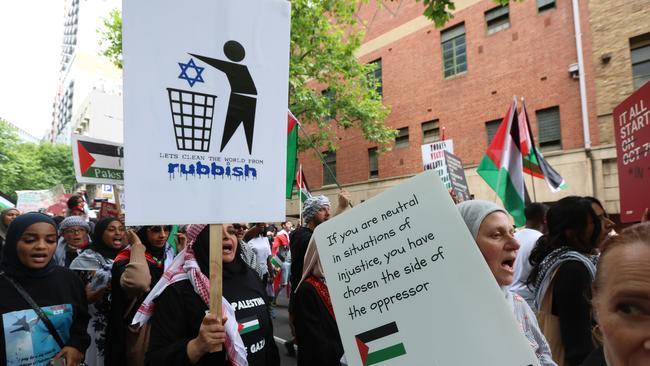
The sort of politically motivated violence Burgess has warned about erupted in Melbourne’s Jewish heartland of Caulfield late last year when pro-Palestinian protesters were arrested for charging at Jewish counter-protesters during a provocative rally outside a synagogue.
Shortly afterwards, pro-Palestinian activists confronted Israeli family members who had lost their loved ones in the October 7 massacre, storming into the Melbourne hotel where they were staying and placing dolls covered in fake blood on the floor.
This ugly activism is driven by what intelligence agencies describe as a “self-righteousness” about the pro-Palestinian cause that blinds these protesters to the normal standards of protest behaviour. Hence, we have seen acts such as the bizarre and offensive defacing of Australian war memorials with pro-Palestinian slogans when these memorials have no relevance to the current conflict in the Middle East.
More ominously for ASIO is the movement’s support for the vandalisation and defacing of the electorate offices of more than a dozen federal MPs and ministers, some of whom can no longer work from those taxpayer-funded workplaces.
In June pro-Palestinian activists set fire to the electorate office of Melbourne Jewish MP Josh Burns and painted horns on his image in a poster. ASIO would have noted Burns’s response when he said: “I’m nervous about someone getting hurt or worse. How is this a peaceful act? It didn’t bring about peace in the Middle East. If it did, I would have vandalised my own office.”
The government shares part of the responsibility for the rise of this out-of-control racist activism because from October 7 it has failed to call out anti-Semitism as strongly as it should have, fearing an electoral backlash from Muslim voters in its western Sydney electorates.
But it is the Greens who have done more than any other political group in the country to fuel this increasingly violent protest movement and undermine the country’s social cohesion that Burgess has warned about.
The Greens have refused to call out the excesses of pro-Palestinian activists including the defacing of war memorials, where Greens leader Adam Bandt glibly dismissed the issue, saying the Prime Minister and the Opposition Leader “were more agitated about graffiti than they have been about the slaughter of people in Gaza”.
Greens deputy leader Mehreen Faruqi has even refused to say whether the listed terror group Hamas should be dismantled.
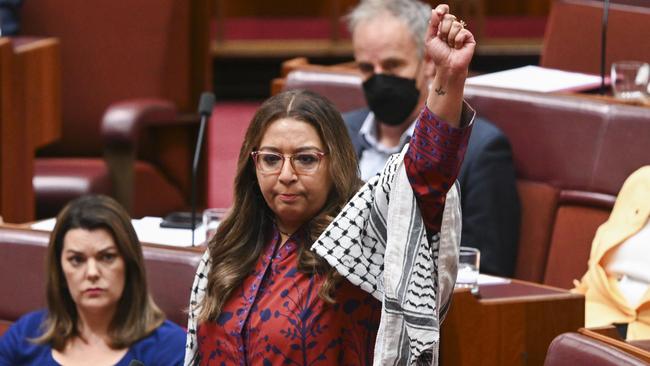
Former ASIO chief Dennis Richardson says political leaders need to avoid any actions that can lead others down a pathway to violence. But he also says those most likely to carry out acts of terrorists or politically motivated violence don’t usually take their leads from politicians.
“It’s always a bit difficult in a liberal democracy because part of the liberal democracy is robust public debate, and part of that robust public debate is politicians having a go at one another. But I don’t think it’s appropriate for politicians to be encouraging those who would seek to essentially blockade electoral offices,” Richardson says, without naming the Greens. “That strikes me as being fundamentally anti- democratic.
“And if you’re going to encourage people to do something like that, you do run the risk of perhaps even unintentionally creating a framework in which it’s easier for people to rationalise what other things they may want to do. So you’ve certainly got to watch that.
“But, equally, I doubt whether too many of those who do engage in politically motivated violence get their lead from politicians.”
Richardson says the key question for ASIO is whether the local passions inflamed by the Gaza conflict could spill over into a deadly act.
“I think (Burgess) was in part saying, ‘Look, there are people out here who at the best of times are borderline, and developments such as we see in Gaza can amplify in their own minds and make it more likely that they might do something.”
For example, Richardson says Australia “would be a much better place if no one in the country had any sympathy for a terrorist organisation like Hamas”.
However, he says among those who do have some sympathy for Hamas in Australia, there’s “a whole spectrum of views”.
“These could range from just being sympathetic to Hamas, through to actually being prepared to do an act that might put people’s lives in jeopardy and actually kill people,” he says.
“The great challenge for ASIO and law enforcement is to monitor a whole range of people who exist right along that spectrum and try to identify those who might actually take that fatal step. And that’s a pretty tough challenge for any organisation.”
The Lowy Institute’s Khalil agrees that this new and broader range of potential security threats identified by ASIO makes the agency’s job of protecting Australians more difficult.
“There are manifestations of political violence now in our society, or concerns around them, that go beyond terrorism,” she says. “It’s becoming an increasingly blurry line between what is legitimate in a democratic society and what should be proscribed, and that is one of the things that makes responses a bit more difficult, because it’s not like it was in the past, where you had these discrete organised groups which would try to conduct various plots and attacks. Now it’s very muddy.”
Khalil says there are now numerous triggers for the type of grievance extremism that Burgess refers to.
“A lot of people are frustrated with the way that democracy is working and they’re increasingly believing that it doesn’t meet the needs of the average person, that it’s really focused on elite interests,” she says. Perceptions of growing inequality and cost of living have led to frustration with governments, fuelling anti-authoritarian views and a wariness of institutions.
“I think it’s not just an issue for ASIO, they’re just one part of the broader spectrum of the response,” Khalil says. “This isn’t just a security issue. So while ASIO will deal with the pointy end of it, where people are radicalised to violence based on whatever mix of grievances they have, that is just one end of this issue. The rest of it is really a broader societal issue.”
Burgess is at pains to say this new range of potential threats is “significant but not insurmountable” and that a terror threat level of probable does not mean inevitable.
But his conclusions are a wakeup call to the real-life consequences of the country’s drift towards intolerance, violent political rhetoric and crumbling political and social civility.
“Like you, I still think we live in a paradise and I think we are the lucky country,” he told Sky News. “But this is stretching us and testing us.”


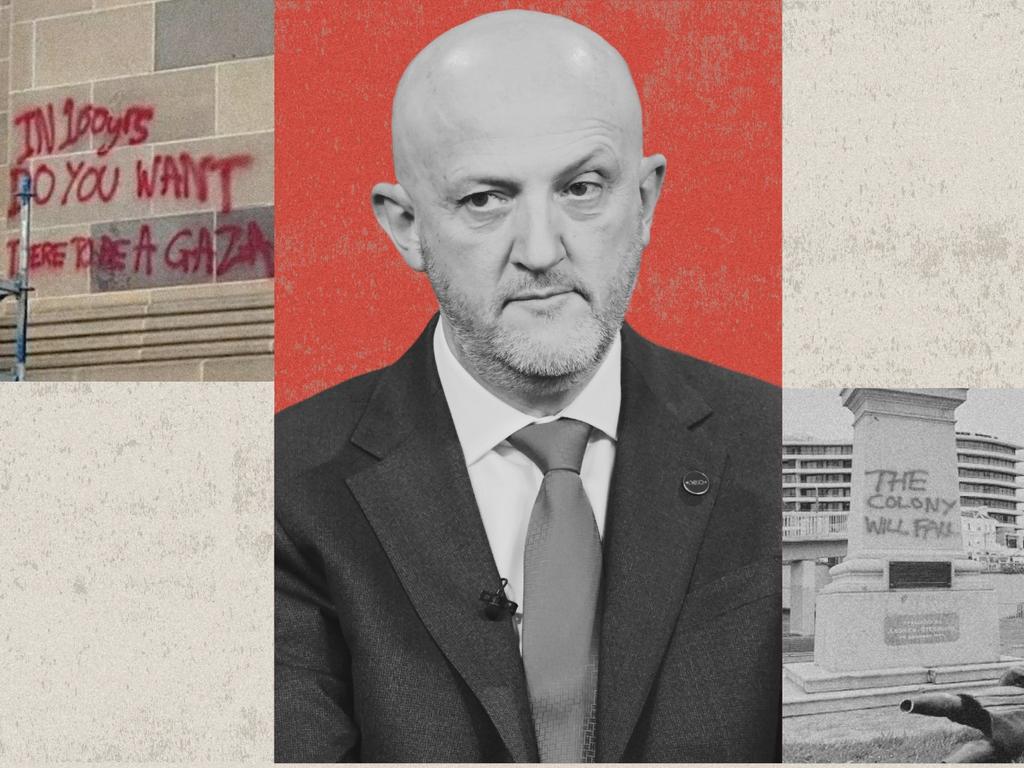

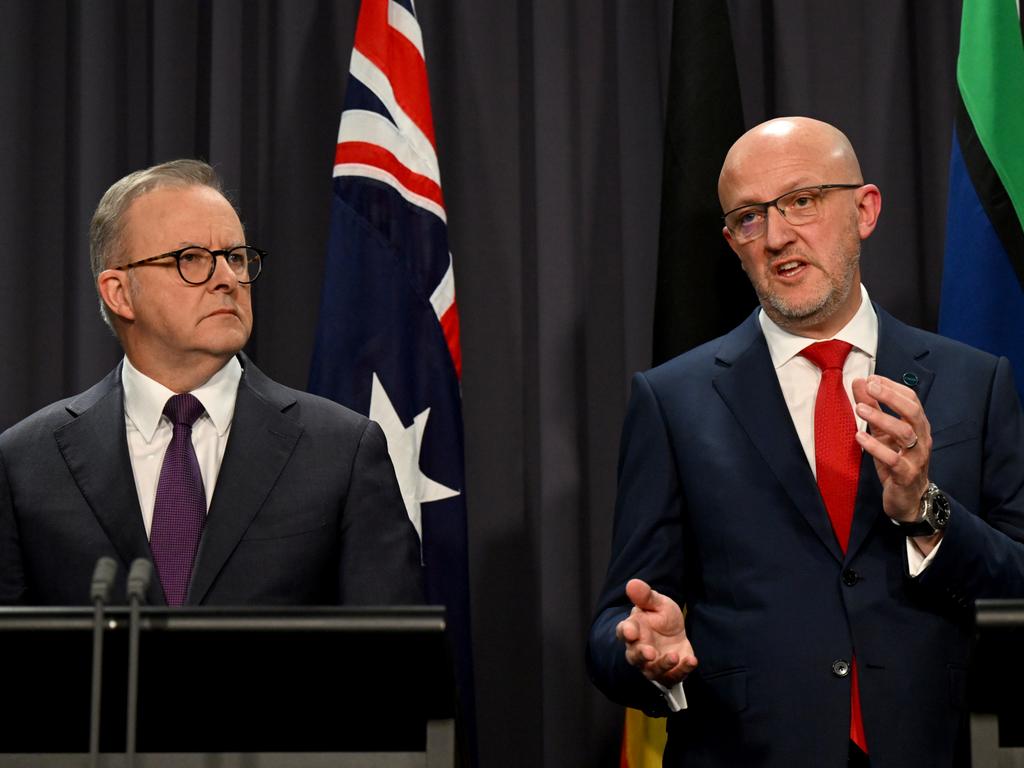

ASIO director-general Mike Burgess did more this week than raise the level of Australia’s terror threat. He redefined our security challenge to recognise an increasingly intolerant and divided country.